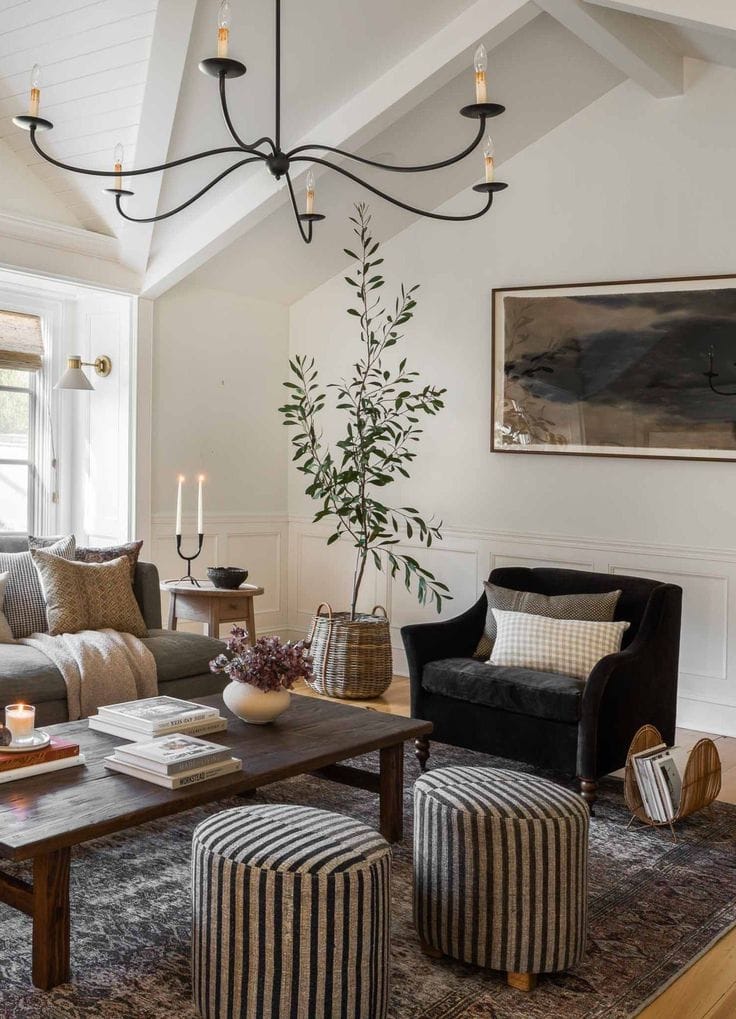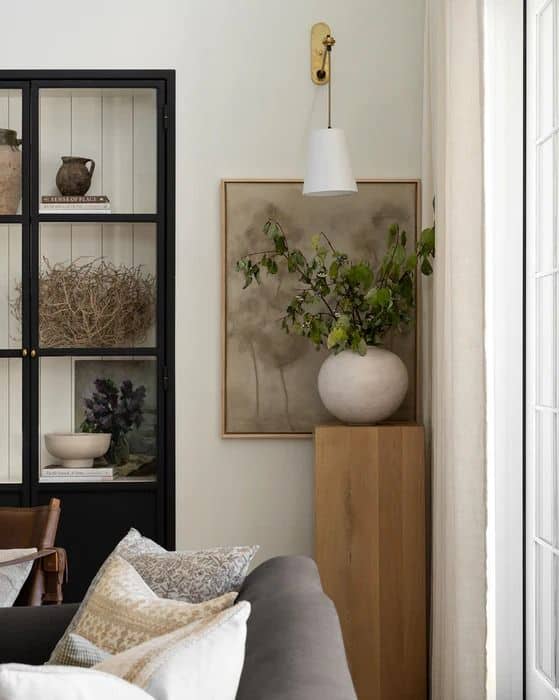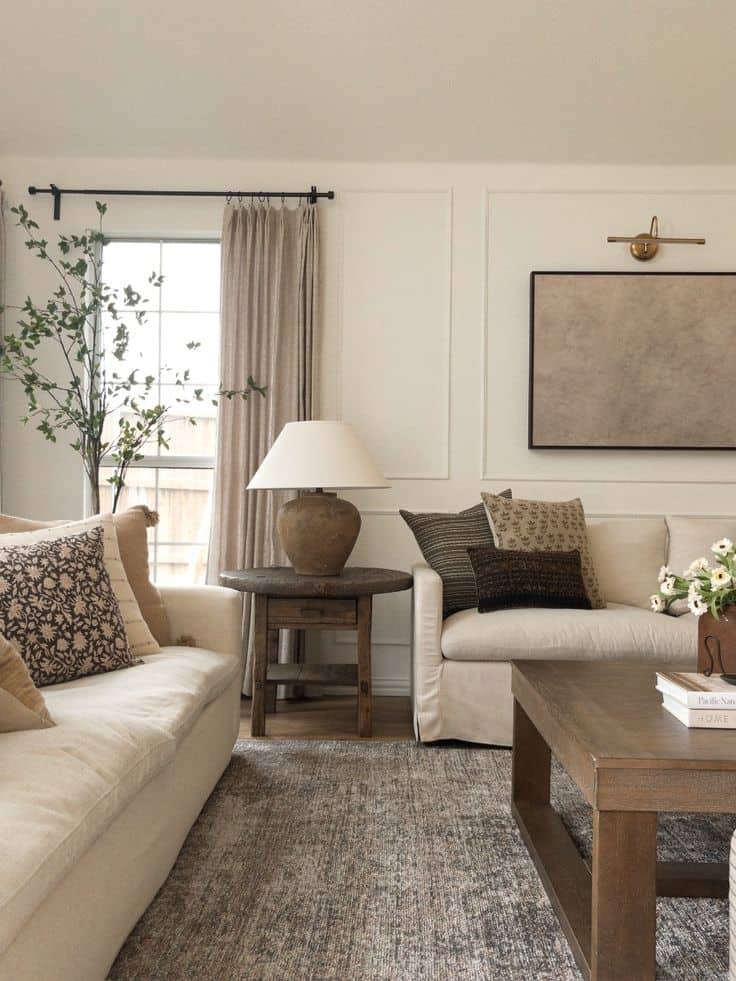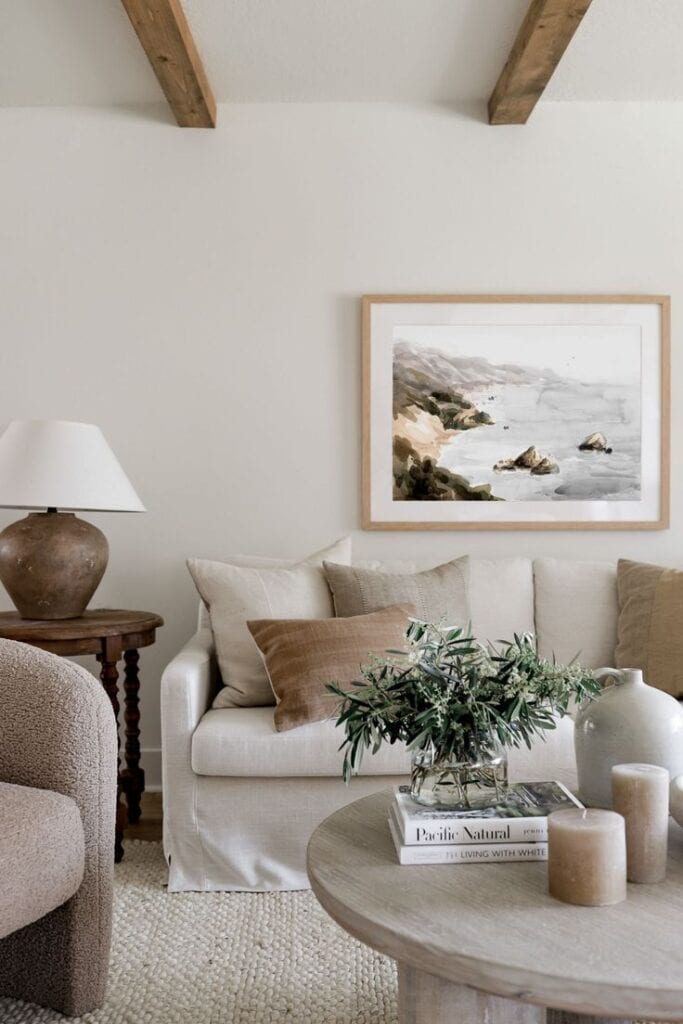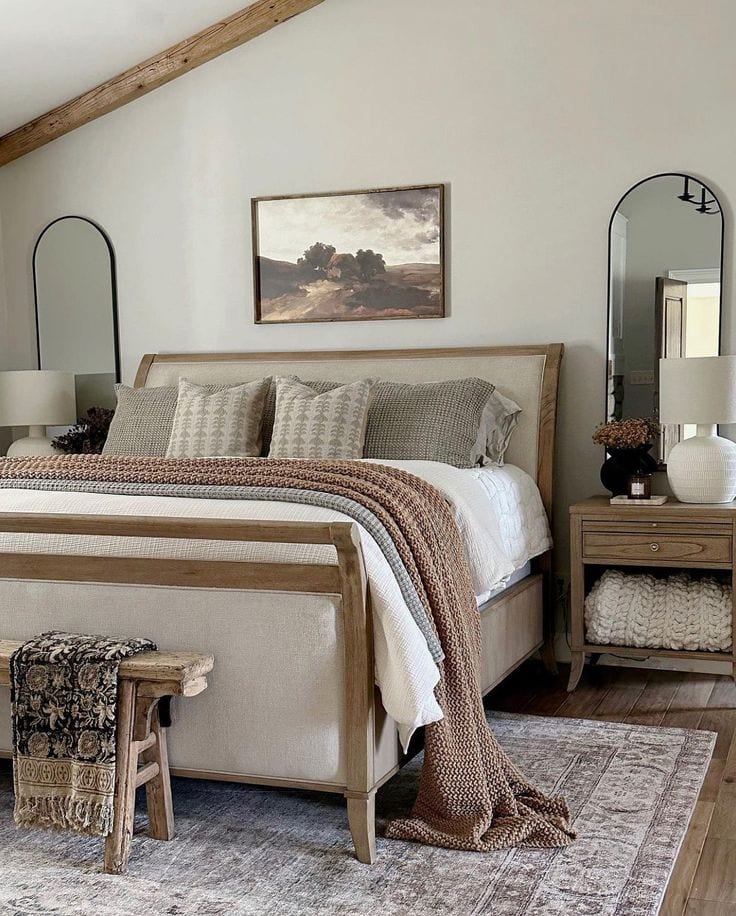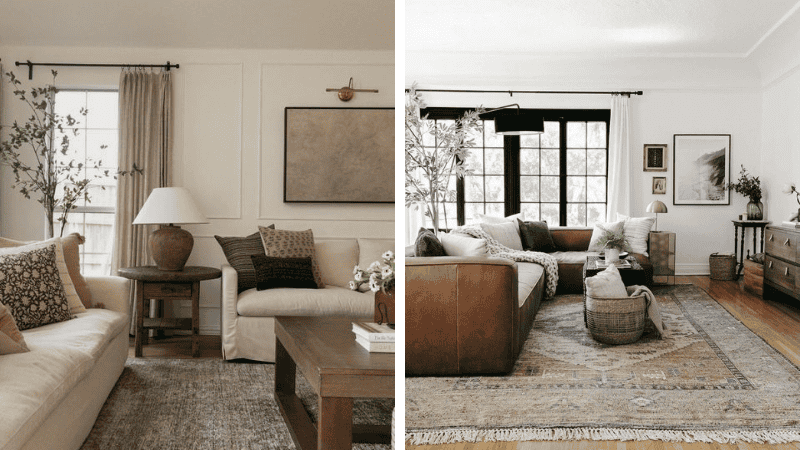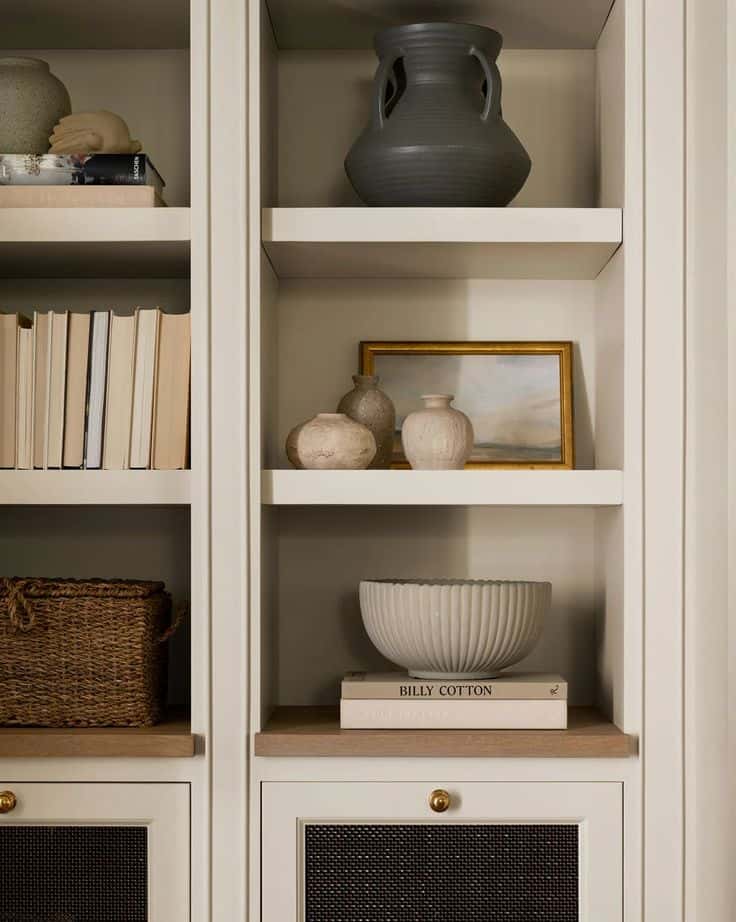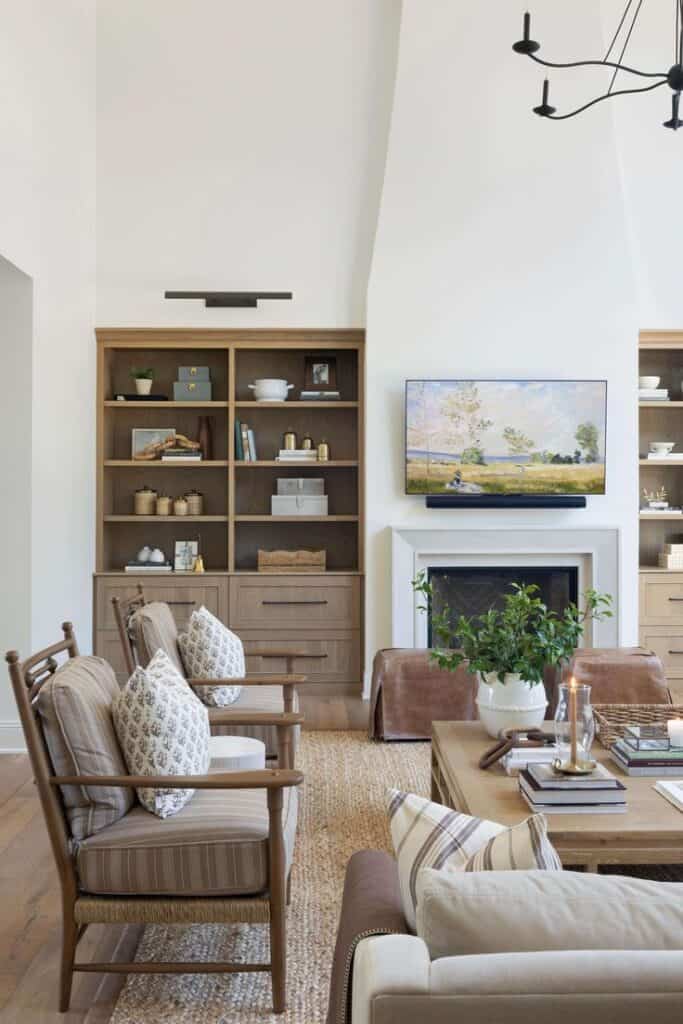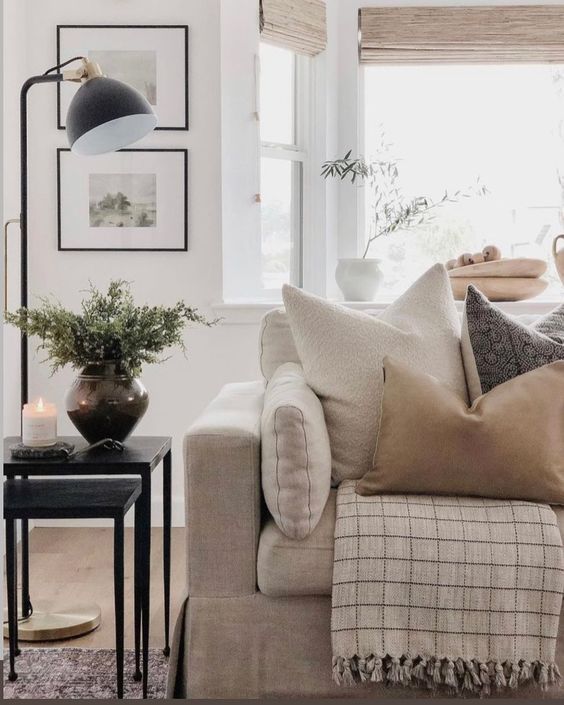What is Transitional Home Decor?
Ever stumbled upon a home that feels both classic and contemporary, warm yet refreshingly updated?
That, my friend, is transitional home decor.
It’s a style that gracefully blends traditional elegance with contemporary simplicity, creating spaces that feel balanced and timeless.
Whether you’re sprucing up your current home or decorating a new one, the transitional home decor aesthetic strikes the perfect balance between comfort and sophistication.
But how do you define this aesthetic?
More importantly, how can you seamlessly incorporate it into your own space?
If you’re intrigued, keep reading!
This guide will walk you through the essentials of transitional home decor and provide actionable tips to bring it into your home.
(This post contains affiliate links. If you purchase a product or service with the links that I provide I may receive a small commission. There is no additional charge to you! Some of the amazing following photos are not my own, click on them to head straight to the source!)
What Is Transitional Home Decor?
Transitional home decor is like the best of both worlds.
It melts together the richness of traditional design—think detailed moldings, cozy furniture, and rich textures—with the clean lines, neutral palettes, and understated vibe of contemporary design.
The result?
Decor that feels fresh and accessible without losing an ounce of charm.
This style is about striking balance.
It avoids being too ornate or overly minimalistic, instead focusing on subtle sophistication and functionality.
Essentially, transitional design creates a timeless canvas for your home that allows you to adapt as your tastes evolve over time.
Key Features of Transitional Decor
To help you spot (and replicate) this look, here are the hallmarks of transitional home decor:
- Neutral Palettes: Transitional spaces often revolve around whites, grays, beiges, and taupes. These soothing neutrals form the perfect backdrop.
- Blend of Materials: Think a soft linen sofa paired with a sleek metal coffee table or a wooden dining table with cushioned chairs.
- Understated Elegance: Instead of flashy or ornate accents, transitional decor opts for subtle yet stylish details such as arched mirrors and muted patterns.
- Function Meets Style: It’s all about creating a beautiful space that feels practical and livable.
Now that you know what transitional home decor is, let’s move on to how you can bring this timeless look into your own space.
Key Steps to Bring Transitional Home Decor to Your Home
1. Start with a Neutral Color Palette
Neutral tones set the foundation for transitional decor.
Stick to soft, calming hues like whites, grays, tans, and creams.
These shades create a versatile backdrop that allows other elements to shine.
If you’re worried that neutrals might make your space feel flat, don’t be!
Add contrast with darker shades like charcoal or navy, and layer in texture—think soft throw blankets, plush rugs, and woven baskets—to keep things visually interesting.
Pro Tip: Keep bold colors to a minimum but don’t shy away from bringing in subtle pops of muted tones (like dusty blue or sage green) through accessories or artwork.
2. Choose Furniture That Strikes a Balance
Transitional furniture finds the sweet spot between traditional and modern.
Think sleek yet comfortable.
Opt for pieces with clean lines, but don’t be afraid of a little detail, like tufting on a sofa or curved legs on a dining table.
Blend materials wisely—for example, pair a streamlined couch with a classic tufted armchair.
Or try combining a warm wooden coffee table with metal picture frames.
This mix will give your room that signature transitional vibe.
Quick Tip: Stick to classic silhouettes for larger furniture while adding modern finishes through smaller pieces, like side tables or lamps.
3. Layer with Textures and Fabrics
One of the easiest ways to warm up a transitional space is through layers of texture.
Consider velvet cushions, a chunky knit throw, or a jute area rug.
Different textures not only add depth but also make your space feel comfy and inviting.
For fabrics, go for natural materials like cotton, wool, leather, or linen to enhance the organic, earthy vibe of transitional decor.
Example: Drape a soft, neutral-toned cashmere throw over a leather armchair for instant coziness.
4. Combine Traditional and Modern Accents
When it comes to decor, merging traditional and contemporary elements is key.
Think vintage-inspired light fixtures paired with abstract art, or classic ceramic vases displayed alongside minimalist candle holders.
For a truly transitional touch, opt for timeless accessories such as gold or silver mirrors, sleek picture frames, or understated sculptures.
These pieces bridge the gap between old and new beautifully.
Pro Tip: Avoid overcrowding your space with too many accessories. A few statement pieces make a bigger impact!
5. Focus on Functional Layouts
Transitional decor isn’t just about aesthetics—it’s about livability.
Arrange your furniture in a way that prioritizes comfort and traffic flow.
For example, keep seating areas cozy and conversational, and ensure each piece has a purpose.
This style emphasizes function, so your home should look great but also feel effortless to live in.
Example: Hang curtains that enhance natural light rather than overpower the room, or use a stylish storage bench to keep clutter out of sight.
6. Add a Touch of Personality
While transitional decor leans on timeless elements, there’s always room to infuse your own personality.
Whether it’s a sentimental piece of art, travel souvenirs, or family heirlooms, personal touches can make your transitional space truly unique.
Arrange these items with care to avoid overwhelming the clean look of your space. The trick is to make it feel curated rather than cluttered.
Why Transitional Decor May Be Perfect for You
If you’re drawn to the idea of combining the best of traditional and contemporary styles, transitional decor is the way to go.
Some of the reasons this design style is so loved include:
- Timeless Appeal: Transitional spaces are designed to outlast fleeting trends.
- Flexibility: It’s a dynamic style that adapts beautifully as your tastes evolve.
- Approachable Balance: It creates a warm yet refined ambiance that feels welcoming and functional.
And the best part?
Achieving this look doesn’t require a complete overhaul.
You can start small—rearranging furniture, changing up accessories, or experimenting with textures—and build your dream transitional space over time.
Infuse Your Home with Transitional Elegance
Now that you’ve got the lowdown on transitional home decor, it’s time to make your Pinterest board dreams a reality.
Whether it’s selecting neutral tones, blending furniture styles, or layering textures, start with these steps to create a home that is as stylish as it is inviting.
Happy Decorating!
